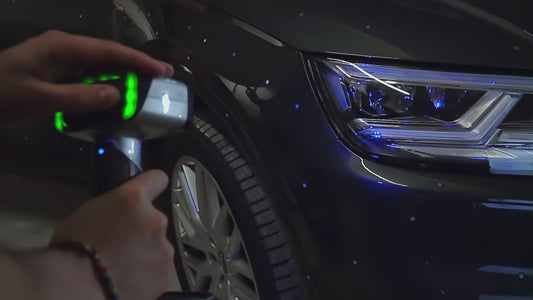Reverse engineering, in the context of mechanical engineering, is the process of analyzing the design and functionality of an object to understand how it works. This is often with the goal of replicating or modifying it. As you can imagine, collecting measurements from a part increases in difficulty the larger and more complex it is.
Reverse engineering can be a nightmare when you can’t reference the sketches, drawings, and history tree used to make a digital model. Thanks to the wonders of 3D measurement technology, you can use 3D scanning for reverse engineering to create millimeter-accurate replicas of mechanical parts and complex machines.
How Does 3D Scanning Work?
3D scanning devices, such as laser scanners or structured light scanners, capture detailed three-dimensional data of the mechanical part. These scanners emit laser or light patterns onto the object's surface and measure the reflections, creating a point cloud of the part's geometry. All the points in a point cloud connect into triangles to form a mesh model, which you can turn into a CAD file using additional software.
The Benefits of Using 3D Scanning for Reverse Engineering
3D scanning can accurately represent the part's shape, size, and surface features. Depending on the project's goals, mechanical engineers can use the point cloud or mesh model to replicate the object exactly or make modifications and improvements. For replication, they may create a duplicate of the original design. For modification, they may seek to enhance performance, reduce costs, or adapt the design for a different purpose.
After replicating or modifying the design, mechanical engineers typically conduct testing and validation to ensure the new product meets the desired specifications and performs as intended. This may involve computer simulations, physical testing, and performance analysis.
Engineers can also use the replicated or revised 3D model to create prototypes using various manufacturing techniques, such as 3D printing, CNC machining, or injection molding. These prototypes can be tested to ensure they meet performance and functional requirements.
What Industries Can Utilize 3D Scanning for Reverse Engineering?
While the most common applications are tool and part recreation, they aren’t the only uses for 3D scanning and reverse engineering.
Reverse engineering is critical for product investigation and quality control. Analyzing worn-down parts without affecting the original material can highlight and eliminate a product’s failures.
Digital Cataloging: 3D scanning allows you to recreate and keep trademarked parts and products in a digital format, eliminating the need for molds and making it easier to preserve products. You can also edit and improve upon them without risking intellectual property. Your engineers will thank you greatly for this, as they can quickly access and modify designs as needed, saving time and money for your company.
Design Modifications: Mechanical engineers can use computer-aided design (CAD) software to modify the 3D model based on the reverse engineering goals. This can include optimizing the design for better performance, reducing manufacturing costs, or adapting it for a different application.
Quality Control: The 3D scan data can be compared to the original design specifications, if available. Engineers can identify differences between the scanned part and the intended design, pinpointing areas for improvement or modification.
If you’re ready to use high-precision technology and make 3D scanning, product designing, and testing easier for your engineers, shop at 3D Wonders. Our 3D scanner for reverse engineering comes in an affordable bundle with powerful reverse engineering software to digitize any part or product to your liking. We provide lifetime licenses and unlimited technical support and guarantee our product will provide accurate results and help you save time and money. Try our 3D scanner for reverse engineering today!






